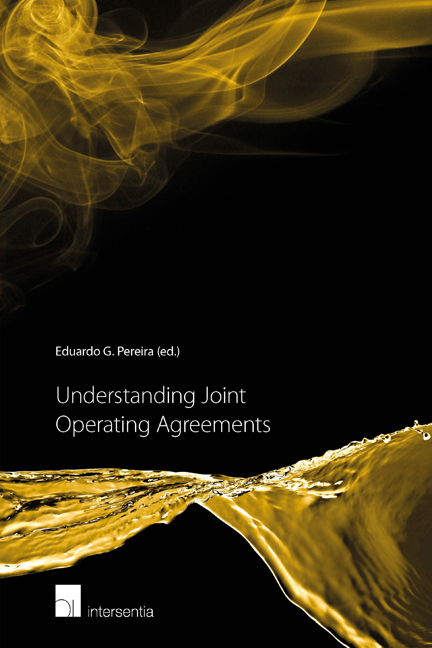20 - Secondment and Project Team: A Positive Mechanism to Support the Operator or an Effective Tool to Control the Operator?
from PART II.B - CONTROL OF OPERATIONS AND EXPENDITURES
Published online by Cambridge University Press: 15 December 2017
Summary
The control and reverse control of petroleum operations is one of the key themes in the terms and conditions of JOA. Traditionally, petroleum operations, especially day-to-day operations, are controlled and managed by the operator. Because of this philosophy, non-operators usually ask for some other mechanisms to be provided in the JOA, to some extent, to exert more influence over the petroleum operations. Secondment and/or project team mechanisms are usually deemed to be effective tools to control the operator or positive mechanisms to support the operator in operator-leading operations.
This chapter will discuss the roles, functions, advantages and disadvantages of the secondment and project team mechanisms. In doing so, it will be concluded that these mechanisms can be used to support or control the operator if used properly, although the secondment mechanism focuses more on the supporting side, while the project team mechanism can be used as an effective supporting and supervisory tool.
There is no straightforward answer to the question whether a secondment arrangement is either a positive mechanism to support operator-led joint petroleum operations or an effective tool to control the operator. In my view, this is not a simple ‘ either/or ‘ question but rather requires a case-by-case analysis.
As discussed above, either the secondment mechanism or the project team mechanism might be used as a positive mechanism to support the operator and an effective tool to control the operator. But from a practical point of view, a secondment arrangement may not, in reality, be used as an effective tool to control the operator, while the integrated project team mechanism is more suitable as a positive mechanism to support and control operator-led joint operations. This chapter will discuss the relevant issues regarding how the secondment arrangement and project team mechanisms are implemented in joint operations and the relevant functions of the two mechanisms hereinafter. This chapter will also examine the relevant clauses provided in the international model JOAs and compare the differences and similarities between them in order to acquaint the reader with the general practice in the petroleum industry.
Information
- Type
- Chapter
- Information
- Understanding Joint Operating Agreements , pp. 387 - 401Publisher: IntersentiaPrint publication year: 2016
